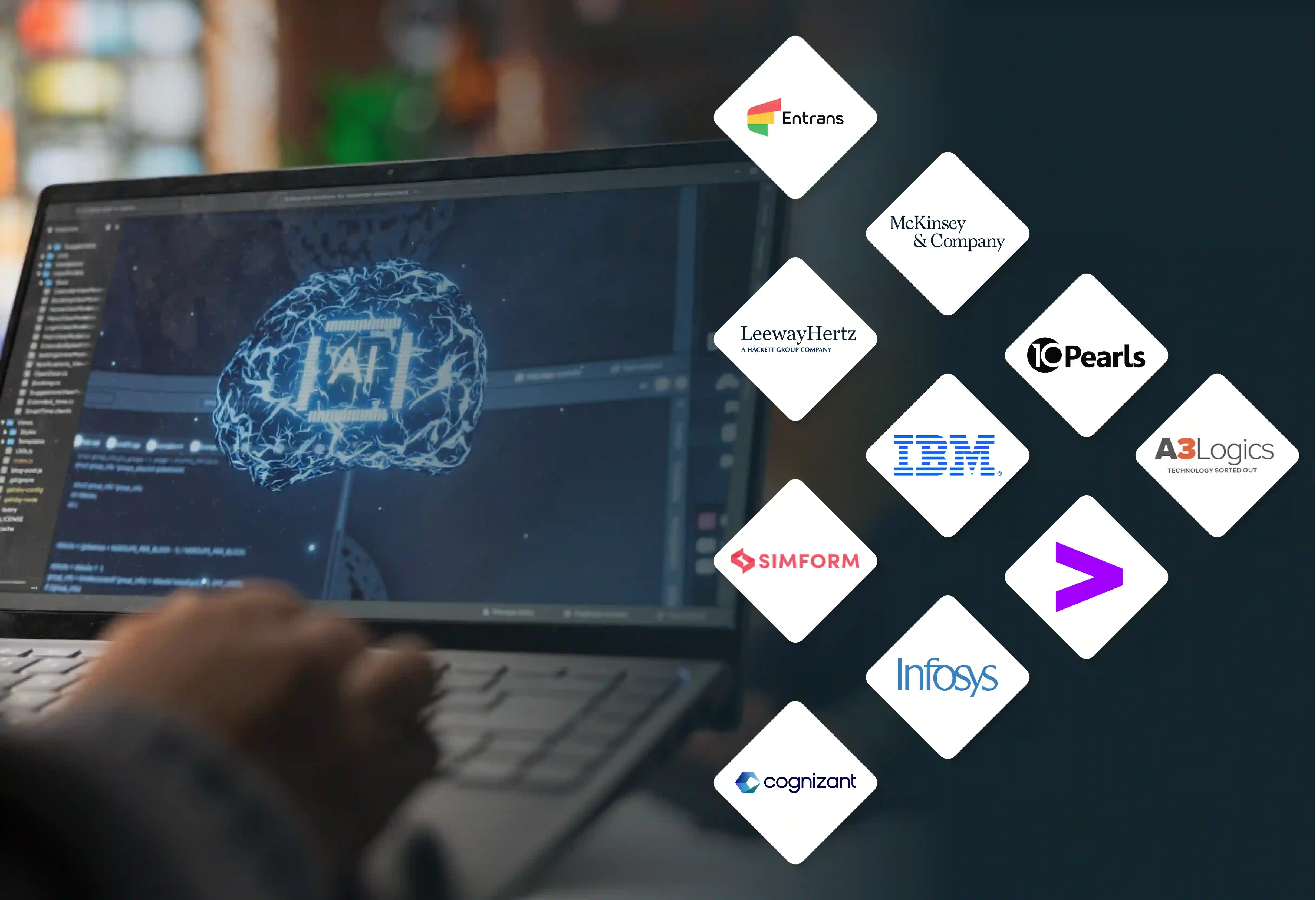


AI agents are autonomous systems designed to perceive their environment, make decisions, and perform tasks to achieve specific goals.
These systems use advanced algorithms, such as machine learning and natural language processing, to understand and respond to user needs.
These types of AI agents are basic, like reflexes! They quickly react to what they sense in their environment without considering past experiences. They operate on a simple "if-then" logic, making them suitable for straightforward tasks in predictable environments. Some examples of these would include:
These agents are a step up from simple reflex agents. They have a basic understanding of the world, a "model," which allows them to consider how their actions might affect their surroundings. This internal model helps them make better decisions in situations where simply reacting to the current situation isn't enough.
Learning agents are fascinating! They can learn from their experiences and improve their performance over time. They can adapt to new situations, solve complex problems, and even exhibit some level of creativity. This learning ability makes them suitable for a wide range of applications.
These agents are driven by goals! They have a desired outcome in mind and can plan their actions to achieve it. They consider the future consequences of their actions and make decisions that are most likely to lead to their goal. This makes them suitable for tasks that require planning and foresight.
These agents are organized! They break down complex tasks into smaller, more manageable sub-tasks. This hierarchical structure allows them to tackle challenging problems by dividing them into simpler parts. Each sub-task can be handled by a specialized component, and the overall behavior of the agent emerges from the coordinated actions of these components.
These agents are all about the best outcome! They don't just want to achieve a goal; they want to do it in the most efficient and effective way possible. They consider factors like cost, risk, and user preferences to choose the best course of action. This makes them suitable for situations where there are multiple ways to achieve a goal, and the best choice depends on a variety of factors.
Imagine a whole team of AI agents working together! They can cooperate to achieve a common goal or compete with each other to solve a problem. This allows for more complex and dynamic behavior, as the agents can communicate, negotiate, and learn from each other.
AI agents utilize various input modalities to gather information from their environment. These modalities can include natural language processing (NLP) for text analysis, computer vision for image and video understanding, speech recognition for audio processing, and sensor integration for interacting with the physical world.
The perceived information is then transformed into structured data representations, such as knowledge graphs or embedding vectors, that the agent can internally process. This often involves techniques like tokenization, parsing, and feature extraction to convert raw data into a machine-readable format.
Once information is perceived and represented, the AI agent employs reasoning and planning algorithms to determine the optimal actions to achieve its objectives. This can involve techniques like search algorithms (e.g., A*, Monte Carlo Tree Search), reinforcement learning, and decision theory.
The agent evaluates potential actions based on their expected outcomes and selects the action that maximizes its objective function or reward signal. This process may involve constructing a plan, which is a sequence of actions that the agent intends to execute.
Retrieval-Augmented Generation (RAG) plays a crucial role in enabling AI agents to access and utilize vast amounts of information efficiently. RAG systems combine information retrieval techniques with generative models. When the agent needs specific information, it queries a knowledge base or external resources (e.g., the internet) using semantic search or other retrieval methods.
The retrieved information is then integrated with the agent's internal knowledge and used to generate more informed and contextually relevant responses or actions. This process often involves techniques like attention mechanisms and knowledge grounding to ensure the generated output is consistent with the retrieved information.
The execution phase involves translating the planned actions into concrete outputs or behaviors. This can involve interacting with external systems through APIs, generating natural language responses, controlling robotic actuators, or manipulating digital objects.
The agent utilizes its effectors, which are components that enable it to interact with its environment. The execution process may involve monitoring the effects of actions and making adjustments based on real-time feedback.
AI agents employ learning mechanisms to continuously improve their performance. This often involves a feedback loop where the agent receives feedback on its actions and uses this feedback to update its internal models or policies. This can be achieved through techniques like supervised learning, unsupervised learning, and reinforcement learning.
The agent analyzes the outcomes of its actions, identifies successes and failures, and adjusts its behavior accordingly. This allows the agent to adapt to new situations, learn from experience, and become more effective over time.
Use Cases for AI Agents in Different Industries
In manufacturing, intelligent agents can analyze vast amounts of data from various sources, such as sensors, machines, and production lines, to identify patterns and anomalies in real time.
Using machine learning and computer vision, AI agents can also enhance quality control by identifying defects and inconsistencies in products, ensuring that only the highest quality goods leave the factory.
AI agents are transforming the SaaS landscape by providing personalized user experiences, automating tasks, and improving customer support.
AI agents can also automate repetitive tasks, such as data entry and report generation, freeing up human employees to focus on more strategic initiatives.
AI agents are empowering marketing and sales teams to personalize customer interactions, automate repetitive tasks, and improve lead generation and conversion rates. AI agents can also create targeted marketing campaigns, recommend relevant products, and provide personalized customer service.
This leads to increased customer engagement, brand loyalty, and ultimately, higher sales.
AI agents are playing a critical role in the development of autonomous vehicles, improving driver safety, and enhancing the overall driving experience.
By processing data from sensors, cameras, and radar systems, AI agents can perceive the environment, make driving decisions, and navigate safely.
This technology is paving the way for self-driving cars, reducing accidents, and improving traffic flow.
AI agents are transforming healthcare by assisting with diagnosis, treatment planning, patient monitoring, and drug discovery.
These agents can identify patterns and anomalies, helping healthcare professionals make more accurate diagnoses and develop personalized treatment plans. This technology is improving patient outcomes, reducing medical errors, and accelerating medical research.
The future of AI agents will center on adaptability, autonomy, and collaboration. These agents will increasingly use advanced learning models to handle complex, context-specific tasks across industries.
For companies, this means adapting to the advent of these AI models and creating in-house models to have a competitive advantage in the marketplace. AI right now is what the internet was in the 2000s - you need to use it in a way that adds value to your business and workflow.
Want to create your own custom AI? Reach out to Entrans for any AI-related advice!





